Turtles
SPUR-THIGHED TORTOISE
Testudo graeca
The carapace of the spur-thighed tortoise is convex in shape, with yellowish and olive green tones, sometimes darker to black. It is made up of plates bordered in black and sometimes also has a black central point.
A particular feature of this turtle is that they have a supracaudal plate on the dorsal part of the carapace, unlike other species, which is not divided.
Did you know?
As a collaborating entity of the Department of the Environment, we guarantee the life of these specimens and bring the public closer to knowledge of this species.
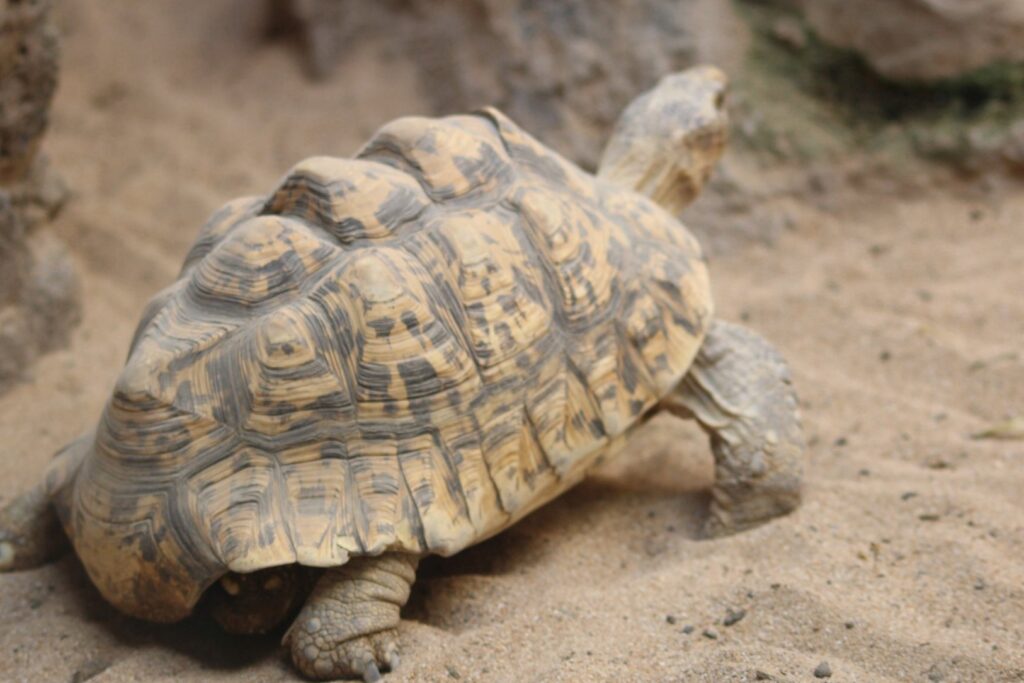
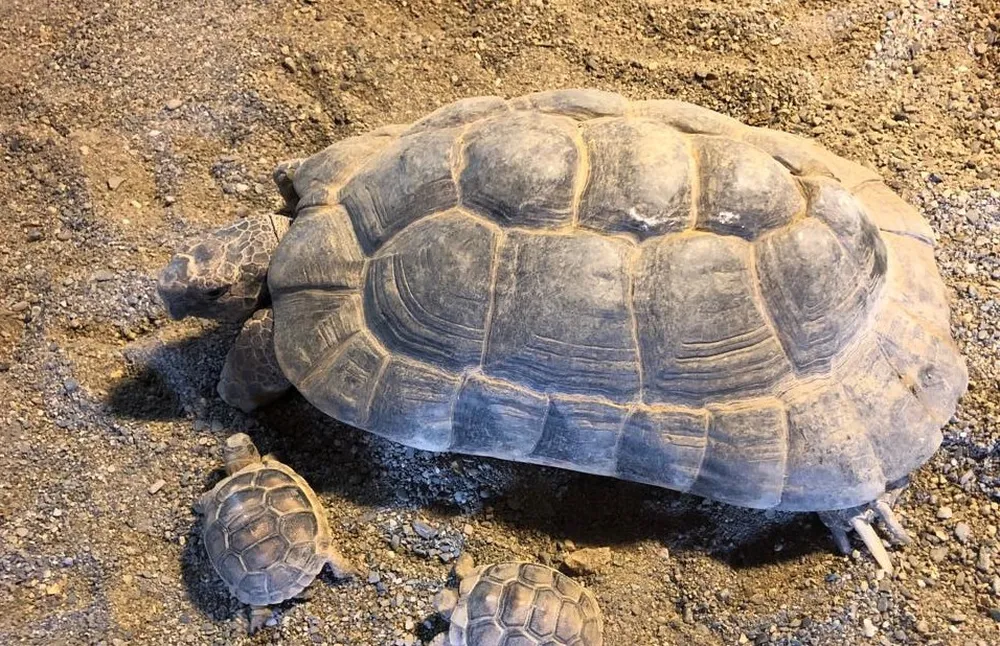
MARGINATED TORTOISE
Testudo marginata
The marginated tortoise is the largest of the testudo genus, reaching up to 35cm, although the average is 25-30cm for males and 24-38cm for females. Females weigh more than males because they are narrower.
The distinctive character of the species is present on the plastron: 3-5 pairs of black triangles with the apex pointing towards the tail. Another unique character of the species is the presence of a characteristic flap formed by the posterior marginal plates.
Did you know?
Their defence behaviour is passive: hiding legs and head inside the shell. If this does not persuade the predator, the moment it tries to bite it, it may urinate and defecate profusely to make the predator release it.
AFRICAN SPURRED TORTOISE
Geochelone sulcata
It is one of the largest tortoises in Africa. The carapace is lightly engraved with concentric squares and has a uniform ochre-brown colour, which may become lighter. Only the intercostal junctions become black.
The plastron is the same colour as the carapace and unspotted. The head is elongated and small compared to the size of the carapace, and is provided with a hooked horny beak.
The head, limbs and tail are of the same earthy colour, which gives the animal a perfect adaptation to camouflage itself in the environments where it lives.
Did you know?
They grow rapidly. They double in size every three years and are the third largest turtle in the world.
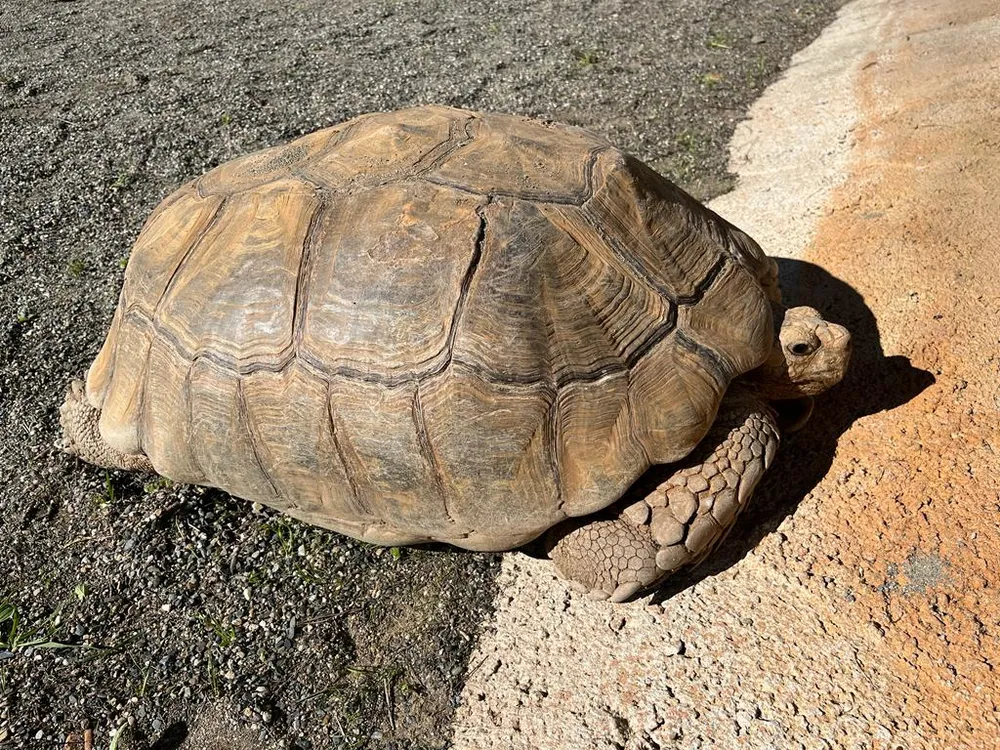
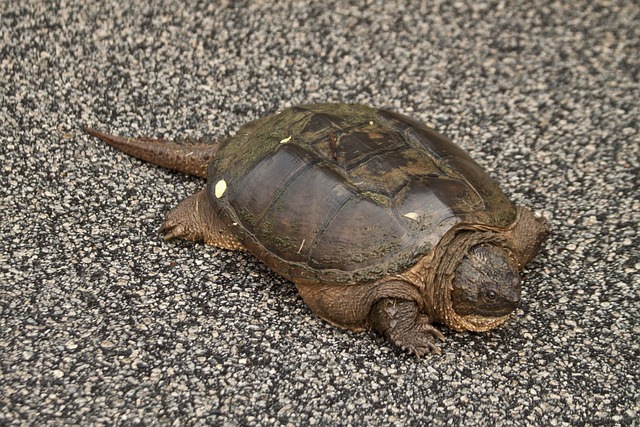
SNAPPING TORTOISE
Chelydra serpentina
Their carapace typically ranges in length from 20cm to 47cm and in colour from dark brown to black in some individuals.
The tail is almost as long as its shell and has saw-tooth keels. It has tubercles on its neck and legs. The neck, legs and tail are yellowish in colour while the head is dark.
Did you know?
Their powerful jaws can cause serious injuries, although they are animals that prefer to avoid confrontation. They can swim up to 35km/h.
AFRICAN HELMETED TORTOISE
Pelomedusa subrufa
It has a fairly flat carapace. It is usually dark grey to brown in colour and is not patterned. The plastron may be light with diffuse dark patches or all dark.
The head and legs are dark olive, and the underside of the neck is a much lighter colour.
The top of the head is usually spotted and they have very stout, rather webbed feet.
Did you know?
These turtles cannot retract their heads like other species and instead lay their heads on their sides so that they are protected under their shells. They have strong defensive scent secretions that can be recognised from long distances.
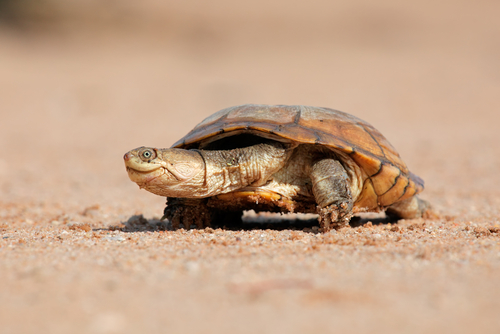

BELL´S HINGE-BACK TORTOISE
Kinixys belliana nogueyi
The jointed tortoise is found from Somalia south to Swaziland and Kwazulu-Natal, west to Congo and across West Africa to Senegal; it is also present in Madagascar.
Their natural habitat is savannahs and dry grassy plains, all areas with a climate characterised by very different dry and wet seasons.
During the winter, when temperatures drop, it hibernates in a burrow. It is oviparous and lays about 20 eggs under the ground between November and January. Hatching occurs in February and the young reach sexual maturity at three years of age.
Did you know?
On the back of its shell, the tortoise has a 90-degree hinge that, when closed, protects the hind legs and tail from predators.
LEOPARD TORTOISE
Stigmochelys pardalis
Leopard tortoises are the second largest of the African tortoises and are herbivorous.
They are more defensive than offensive, retracting their legs and head into their shell for protection.
When the weather is very hot or very cold, it hides in abandoned burrows of foxes, jackals, anteaters or other animals.
Did you know?
Leopard tortoises do not hibernate and do not dig except to make the nests in which they lay their eggs.

In addition to the species mentioned above, in our space you can also meet other fascinating turtles that stand out for their diversity and unique characteristics. Among them are:
- Florida cooter (Pseudemis floridiana)
- Yellow-bellied slider (Trachemys scripta scripta)
- Red-eared slider (Trachemys scripta elegans)
- Central Antillean slider (Trachemys stejnegeri)
- Florida redbelly turtle (Pseudemys nelsoni)
- Nicaraguan slider (Trachemys emolli)
- False map turtle (Graptemys pseudografica)
- Hispaniolan slider (Trachemys decorata)
- Mississippi map turtle (Graptemys khoni)
Come and discover each of them and immerse yourself in the fascinating world of turtles.